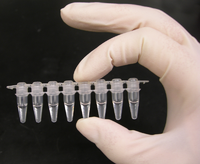
Photo from wikipedia
Abstract BACKGROUND To ensure the safety, quality and therapeutic efficacy of processed foods and herbal medicines, it is important to identify and discriminate economically motivated adulterants. Zanthoxylum schinifolium is sold… Click to show full abstract
Abstract BACKGROUND To ensure the safety, quality and therapeutic efficacy of processed foods and herbal medicines, it is important to identify and discriminate economically motivated adulterants. Zanthoxylum schinifolium is sold at a higher price than other Zanthoxylum species and is frequently adulterated with closely related Zanthoxylum species because of its high demand as a Korean food ingredient and medicinal material in markets. In addition, the pericarps of three Zanthoxylum species (Z. schinifolium, Z. bungeanum and Z. piperitum) are defined as herbal medicine Zanthoxyli Pericarpium in Korean pharmacopoeias, but not Z. piperitum in Chinese pharmacopoeias. Further confusion arises in the morphological similarity between Z. armatum (adulterant) and Z. bungeanum. Therefore, the aim of this study was to develop a sequence characterized amplified region (SCAR) marker for discrimination of four Zanthoxylum species. RESULTS With the goal of developing rapid and reliable tools for genetic discrimination of authentic Zanthoxyli Pericarpium, we designed species‐specific SCAR markers, based on ITS2 sequences, that generate amplicons of less than 200 bp. Using these markers, we established both conventional and real‐time PCR assay methods capable of differentiating samples at the species level. We validated the ability of SCAR markers to authenticate edible oil and herbal medicine, and confirmed that some herbal medicines contaminated with Z. armatum are being distributed as Zanthoxyli Pericarpium in Korean and Chinese markets. CONCLUSIONS The SCAR markers and PCR methods described represent powerful tools for protecting against adulteration and ensuring standardization of processed foods and herbal medicine. © 2018 The Authors. Journal of the Science of Food and Agriculture published by John Wiley & Sons Ltd on behalf of Society of Chemical Industry.
Journal Title: Journal of the Science of Food and Agriculture
Year Published: 2019
Link to full text (if available)
Share on Social Media: Sign Up to like & get
recommendations!